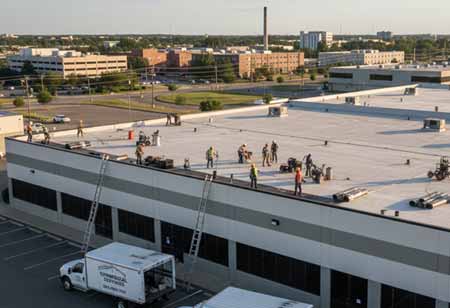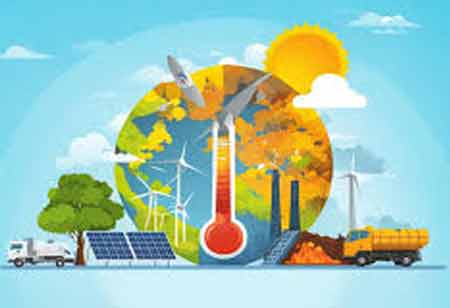Thank you for Subscribing to Construction Business Review Weekly Brief
Specials
- Apartment and Condominium Contractors Canada
- Decking Canada
- Architectural Glass Europe
- MEP APAC
- Construction Saudi Arabia
- German Apartment and Condominium Contractors
- Construction Law APAC
- Outdoor Construction
- Foundation Construction Canada
- MEP Canada
- Kitchen and Bath
- Cold Storage Construction APAC
- Precast Concrete Europe
- Construction Staffing Europe
- Pre-Construction Services
- Flooring System APAC
- Scaffolding Canada
- Swimming Pool Construction Canada
- Construction Management Canada
- Cold Storage Construction Canada
- Flooring Systems Europe
- Residential Construction
- Concrete Canada
- Construction Cladding Europe
- Construction Cladding APAC
- Concretes, Aggregates and Construction Materials APAC
- Concretes, Aggregates and Construction Materials Europe
- Commercial Contractors Europe
- Commercial Contractors APAC
- Dummy
- Construction Insulation, Coating and Waterproofing
- Construction Management APAC
- Landscaping Canada
- Construction Coating Europe
- Construction Tech Startups Europe
- Insulation Services Europe
- Mechanical Contractor Canada
- Mould Remediation and Testing Europe
- Swimming Pool Construction APAC
- Building Sealing Solutions Europe
- Construction Engineering Services
- Mechanical Electrical and Plumbing
- Roofing Systems Europe
- Architectural Glass APAC
- Startups APAC
- Construction Forensic and Owners Representative
- Flooring System
- Waterproofing APAC
- Wall Systems
- Safety and Compliance Europe
- Construction Bidding and Auctions
- Modular and Prefab Construction
- Architectural Glass
- Construction MENA
- Construction Demolition and Recycling Europe
- Modular Construction Europe
- Construction Interiors
- Steel Building APAC
- HVAC
- Doors and windows
- Construction Latam
- Building Information Modeling APAC
- Sustainable Construction APAC
- Building Restoration and Maintenance
- Commercial Contractors
- Specialty Construction
- Construction Engineering Canada
- Construction Engineering MENA
- Modular Construction Canada
- Modular Construction APAC
- Roofing and Siding Systems
- Workforce Management and Staffing
- Roofing Systems APAC
- Construction Consulting
- Steel Building Europe
- Construction Demolition and Recycling APAC
- Safety and Compliance APAC
- Concretes, Aggregates and Construction Materials
- Construction Cladding
The Roof as a System: Redefining Commercial Roofing in the Age of Integration
The commercial roofing industry is evolving from a cost-centric trade to a focus on high-performance, sustainable solutions, emphasizing specialized services, advanced technology, and long-term asset management.

By
Construction Business Review | Tuesday, September 16, 2025
Stay ahead of the industry with exclusive feature stories on the top companies, expert insights and the latest news delivered straight to your inbox. Subscribe today.
The commercial roofing industry is shedding its long-held identity as a commoditized trade defined by low bids and basic functionality. For decades, the commercial roof was viewed as a necessary but uninspired component of a building—a passive shield against the elements, procured with a primary focus on minimizing upfront costs. The conversation was simple, revolving around price per square foot and a functional warranty. Today, that paradigm is being systematically dismantled. The roof is no longer just a cost center; it's being recast as a high-performance asset and a key strategic differentiator in a building's overall value, efficiency, and sustainability. This evolution marks the definitive rise of specialized commercial roofing services.
The Forces Driving the Evolution
Advances in material science and technology, along with other powerful currents, are driving the industry-wide shift from product-based transactions to service-oriented partnerships. The market has expanded far beyond traditional built-up roofing (BUR) and modified bitumen. Sophisticated single-ply membranes like TPO, PVC, and EPDM offer superior durability, reflectivity, and installation efficiency. Liquid-applied systems provide seamless, monolithic surfaces that are ideal for complex roof geometries. These advanced materials are not interchangeable commodities; they are engineered systems that demand a deep understanding of chemical compatibility, substrate preparation, and specialized application techniques to perform as designed.
The focus of asset management has evolved from installation costs to long-term total cost of ownership, reflecting a more sophisticated and lifecycle-driven approach. Informed clients now demand data-driven projections on maintenance requirements, repair costs, and the expected service life of their roofing investment. This requires a contractor who can not only install a system but also provide a long-term strategic plan for its care, maximizing the return on a significant capital expenditure.
The increasing integration of building systems has made the roof a much more crowded and critical space. It's no longer just a barren expanse but a platform for essential infrastructure, including large HVAC units, solar panel arrays, communication equipment, and even occupied spaces like rooftop patios and vegetative gardens. This integration demands a higher level of expertise in structural loads, waterproofing details around hundreds of penetrations, and ensuring the seamless performance of the roof as a foundational platform for other critical building assets.
The New Landscape of Specialized Services
The evolution in demand within the roofing sector has given rise to a new class of contractors and a portfolio of specialized services that were once considered niche but are now central to the industry’s future. Acting as building envelope consultants, they collaborate with architects, engineers, and owners to identify the optimal roofing system based on the building’s function, climate, energy objectives, and long-term budget. This integrated approach ensures that the roof is designed for performance from the outset, rather than being compromised through cost-driven value engineering.
Another key development is the shift from reactive maintenance to advanced diagnostics and proactive asset management. Industry leaders are deploying sophisticated technologies to manage and preserve roofing assets. Drone surveys now deliver high-resolution visual data and thermal mapping of entire roof surfaces with unmatched speed and safety. Infrared thermography enables the detection of subsurface moisture, allowing for targeted repairs before minor issues escalate into costly failures. These insights are integrated into digital roof management platforms, providing building owners with real-time dashboards and strategic plans for maintenance, budgeting, and capital planning.
The Rise of Sustainable Systems and the Professionalization of Roofing
The demand for sustainable and environmental roofing solutions is also driving significant growth. Today’s specialists move far beyond reflective membranes to design and install advanced vegetative or “green” roofs that mitigate stormwater runoff, reduce the urban heat island effect, and create usable amenity space. In parallel, “blue roof” systems are being developed to detain stormwater, alleviating pressure on municipal drainage networks temporarily. The increasing adoption of rooftop solar has further accelerated the need for “solar-ready” roofing systems—membranes, structural designs, and installation techniques engineered to support photovoltaic arrays for decades.
Roof restoration and coatings have emerged as a highly technical and sustainable alternative to complete replacement. Instead of incurring the financial and environmental costs of a complete tear-off, liquid-applied coatings can restore a roof’s watertightness and reflectivity, extending its service life by 10 to 15 years. This process requires far more than a simple surface treatment; it is a precision-driven application rooted in chemical engineering, involving meticulous preparation and specialized expertise in material science to achieve lasting performance.
The modern roofing technician is a new kind of professional—both skilled craftsperson and building science expert—shaped by today’s evolving service landscape. They hold multiple certifications from material manufacturers and are trained in the latest diagnostic technologies. They are problem-solvers and consultants, capable of communicating complex technical information to building owners and managers. The industry is professionalizing, with an increasing emphasis on continuous education, stringent safety protocols, and a commitment to delivering long-term value over short-term savings.
The commercial roofing industry has reached an inflection point. The forces of technology, sustainability, and sophisticated asset management have irrevocably shifted the roof's role from a static, overlooked commodity to an integral building system. For building owners and managers, the choice is no longer about finding the cheapest installer. It is about finding a strategic partner with the specialized expertise to design, install, and manage a roofing asset that enhances building value, improves operational efficiency, and contributes to a more sustainable future. The roof has found its voice, and it is speaking the language of performance.





